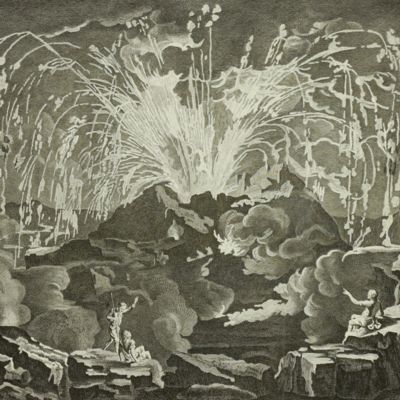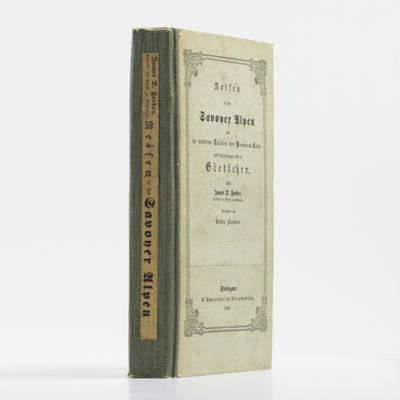Diderot, D. and J. d'Alembert (eds.)
Encyclopédie ou dictionnaire raisonné des sciences, des arts et des métiers, par une société de gens de lettres mis en ordre par Mons. Diderot. Histoire naturelle. Règne mineral.
Paris, Diderot et d'Alembert, 1768. Folio (43.2 x 27.2 cm). 4 pp., 130 plates (partly folded). Disbound.
Part of the massive, famous and notoriously complex Encyclopédie by Diderot and d'Alembert, being the first true encyclopaedia. This is most if not all published on mining and mineralogy. The text pages contain a description of the plates, subdivided in "Collections". In total, the Regne minérale consists of seven "collections", with 47 plates, which are all present. This includes 14 plates with fossils, and 11 with crystals, as well as three large, folded plates of the eruption of Mount Vesuvius in 1754 and 1757. Various other minéralogie sections, not listed as "collections", follow this. These include, for instance, Géometrie souterraine (one plate), Sonde de terre (three plates), Instruments des mines (two plates), Coupe d'une mine (three plates), Mercure, one plate and an explanatory text leaf, Cobalt (idem), Souffre (two plates and text), etc., etc. Some of these sections, dealing with specific minerals, are quite large; for instance, the one on Salpetre has four text pages and nine plates, of which two are larger and folded. Another larger section deals with the Ardoiserie de la Meuse (slate mining along the Meuse river), with eight text pages and five plates, a similar one with slate mining in the Anjou region, and another large section on salt mining, as well as one on fabricating gunpowder. In total there are 129 plates, of which many are large and folded or double folded, all with explanatory text leaves. Some soiling, a few old paper repairs, but in general a very good set. Nissen ZBI, 4622.





